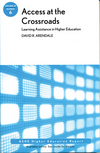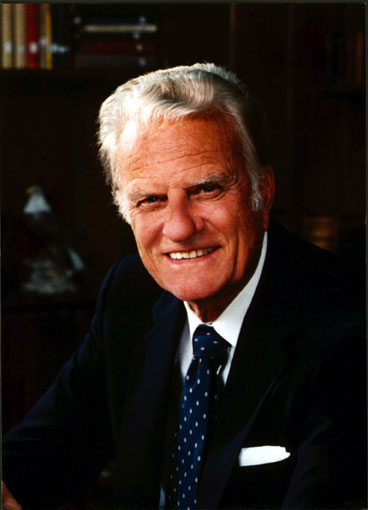
This blog focuses on my scholarship in my five research projects: learning assistance and equity programs, student peer study group programs, learning technologies, Universal Design for Learning, and history simulations. And occasional observations about life.
"A Christmas Carol" movie (1951 starring Alister Sims)
I think this is the best movie adaptation of Charles Dickens classic story. In his book, Dickens was actually making a social commentary about the disparity of life in London during the middle 1800s as well as communicate a powerful story of redemption and reconciliation. Especially note the scene when one of the ghosts tells Scrooge to fear the two children of 'want' and 'ignorance' and think of why those two ideas would be a threat to English society. I think Mr. Sims provides the perfect balance to the character. This part of the movie is missed by most of the movie versions who just want to play the story light and make it just a feel good story. The final result to the movies may be the same, but taking up the serious social commentary of Dickins in this movie makes the ending so much more satisfying and meaningful. Enjoy the movie from YouTube.
</ifr</div></div>
Sergeant Alvin York: Profile of a Humble Hero
History Simulations: Engaging Critical Thinking and Developing Multiple Perspectives from Other Cultures

My Global History Course Curriculum: Building Cultural Competency and Skill for a Diverse and Interconnected World
2018 Revised Annotated Bibliography of Postsecondary Peer Cooperative Learning Programs
 I am happy to announce that the 2018 Revised Annoated Bibliography of Postsecondary Peer Cooperative Learning Programs is now available to download. Click on this link for a PDF or Word version of it.
I am happy to announce that the 2018 Revised Annoated Bibliography of Postsecondary Peer Cooperative Learning Programs is now available to download. Click on this link for a PDF or Word version of it.
There are now nearly 1,500 entries spanning 488 pages. I noticed recent listserv conversations about locating research studies to support Supplemental Instruction programs or similar approaches operating at the college level. The directory grew significantly in the past two years. The directory includes the Emerging Scholars Program (Dr. Uri Treisman model), Peer-Led Team Learning, Supplemental Instruction, and Video-based Supplemental Instruction, Structured Learning Assistance, Accelerated Learning Groups, and Peer Assisted Learning.
You can download the directory as a PDF or Word document. I also included some sub-topics of the directory such as facilitator development, vocational influence, identity development and more. I also provide the EndNote library file to allow you to more easily search the database for the topic you want. Be sure also to download the keyword search guide to discover all the ways to search the contents for the information you want. Other bibliographic database systems may be able to open the EndNote file but I am not an expert with that process.
No doubt I missed some citations related to these seven major peer learning programs. Please send me the citation and perhaps a copy of the publication and I will be happy to include in an update. Thanks for consideration.
Approaches to Learning Assistance: Concurrent Acquition of Knowledge and Skills
 With this blog posting, I pick back up on my series of samples from my book, Assistance at the Crossroads described in the left-hand column of this website. There are many ways that academic help can be provided for college students who are struggling in some of their classes.
With this blog posting, I pick back up on my series of samples from my book, Assistance at the Crossroads described in the left-hand column of this website. There are many ways that academic help can be provided for college students who are struggling in some of their classes.
This learning assistance approach operates through concurrent learning experiences. Students simultaneously enroll in a college-level class, whether or not they have been identified as academically underprepared, and use learning assistance services to support their learning in that class. A common characteristic of such a class is academic rigor exceeding the average of other college-level classes. These courses are challenging for many students, and the classes have high withdrawal and failure rates. Sometimes they are called “gatekeeper” classes (Jenkins, Jaggars, and Roksa, 2009).
For purposes of this discussion, this historically difficult class is called a “target class,” as learning assistance services are customized and “targeted” for serving students enrolled in that specific course. Other students in the same class that have not been identified as academically underprepared for content material in that particular class are welcome to use the learning assistance activities as supplemental or enrichment experiences to deepen mastery of course content. This concurrent acquisition approach is divided into three smaller groups of activities: those offered as supplemental learning experiences through the student’s voluntary participation; those offered as a coordinated program that requires moderate involvement by the target course instructor; and those embedded, infused, or mainstreamed in the course targeted for academic support that thereby serve all students enrolled in the class, regardless of their academic preparation.
One of the activities described in the previous section on prerequisite acquisition approaches could also have appeared in this section. Because most students enroll in only a single developmental course, the rest of their courses are at the college level. These students concurrently develop competency through the developmental course while they advance their knowledge and skills through the college-level courses. The key issue that places developmental courses in the previous section is that students are not ready to enroll in the college-level course for which they are underprepared. They are, however, ready for enrollment in other college-level courses. (To be continued.....)
Dr. Rev. Billy Graham - "He is Risen"
 In this podcast episode, we feature Reverend Billy Graham sharing a five-minute, low-key talk about importance of the Easter Story that he recorded in 1960 while on location in Jerusalem. There is a video of the same speech available through YouTube (click this link to watch it). Dr. Graham has retired from active preaching and lives in an assisted medical care facility. His wife passed a few years ago. I attended one of his revival meetings in a crowded Royals baseball stadium in Kansas City many years ago. It was an experience that I still remember today. Here is just a little bit of information about him. He was an active preacher and author for six decades. Dr. Graham sought to relate the Bible to contemporary social issues. He preached jointly with Dr. Martin Luther King at some crusades in the 1950s. Graham provided some of the bail money to release Dr. King when he was arrested after a civil rights demonstration. It is estimated the total audience at revival meetings, listeners on radio, and viewers on television of Dr. Graham’s messages exceeds two billion people. Click this link for a PDF from Wikipedia on the life of Dr. Graham.
In this podcast episode, we feature Reverend Billy Graham sharing a five-minute, low-key talk about importance of the Easter Story that he recorded in 1960 while on location in Jerusalem. There is a video of the same speech available through YouTube (click this link to watch it). Dr. Graham has retired from active preaching and lives in an assisted medical care facility. His wife passed a few years ago. I attended one of his revival meetings in a crowded Royals baseball stadium in Kansas City many years ago. It was an experience that I still remember today. Here is just a little bit of information about him. He was an active preacher and author for six decades. Dr. Graham sought to relate the Bible to contemporary social issues. He preached jointly with Dr. Martin Luther King at some crusades in the 1950s. Graham provided some of the bail money to release Dr. King when he was arrested after a civil rights demonstration. It is estimated the total audience at revival meetings, listeners on radio, and viewers on television of Dr. Graham’s messages exceeds two billion people. Click this link for a PDF from Wikipedia on the life of Dr. Graham.
